success-04_1434359558 “Purusha Sukta of Vedas Misunderstood,


Author
Y. K. WadhwaDate
18-Feb-2017Category
ArticleLanguage
EnglishTotal Views
4595Total Comments
0Uploader
amitUpload Date
18-Feb-2017Download PDF
-0 MBTop Articles in this Category
Top Articles by this Author
- Manusmriti and women's empowerment
- WOMEN\\\'S RIGHT TO PERFORM YAJNA, WEAR YAJYOPAVIT AND VEDIC EDUCATION -
- Pioneering writings of Maharishi Dayanand Saraswati (1824-1883) and other Scholars in exploding the myth of Aryan Invasion Theory.
- success-04_1434359558 “Purusha Sukta of Vedas Misunderstood,
“Purusha Sukta of Vedas Misunderstood, Real Spirit of Manusmriti and its core message ignored - Contribution of original Manusmriti in the Dalit upliftment programme of Arya Samaj and its rippling eff
Literal translation of Vedas and particularly Purusha Sukta or Hymns to Purusha has created lot of myth , misgivings and misunderstanding. The word ’God’ in this sukta should be interpreted as ‘Purusha’ or ‘Brahman’(the Supreme Being or Supreme reality which pervades the entire universe). Pt.Nardev Vedalankar, Editor of Shastra Navanitam(A concise study of Hindu Scriptures), pub.by Arya Pratinidhi Sabha, South Africa describes it as ”The word ‘Purusha’ is derived from the Sanskrit verb, ‘priyn’ which means to fill. The word Purusha thus means one who exists and pervades the entire universe. It could also mean one who lives in a ‘pur’ or a fortified city. This universe is likened to a ‘pur’ in which the Supreme Being or the Supreme Entity dwells. This analogy is extended further to describe the human body as a pur or city with the soul or Jiva(atma) residing within it and also referred to as Purusha. So Purusha is the Supreme Being or Supreme reality which resides in the heart of all beings.”
Brahmanoasya mukhamasida bahu rajanyakriah
Uru tadasya yadvaishya padabhyam shudro ajayat.
(Rigveda 10.90.12, Yajurveda.31.11).
Vedic Language Highly Symbolic
The above hymn of the Purush Sukta relating to Purusha(supreme reality) is entirely an imaginative piece of writing and it is not to be literally translated to mean that the Brahmin originated from the mouth of the Purusha(all pervasive Supreme Entity and obviously implying here formless), the Kshatriyas from the arms, the Vaishyas from the abdomen and the Shudras from the feet. The unique characteristic of Vedic language(different from classical Sanskrit) is that it is highly metaphorical and symbolic and capable of multiple interpretation. However, for a proper understanding of the sense of the Vedas, we have to bear in mind the established standpoint of etymologists like Yaska that all the Vedic words are derived from verbal roots and their meanings are based on their derivation from verbal roots. Purusha Sukta is an analogy between four limbs of the body(head, arms, thighs & feet identified symbolically with society) and the four varnas, i.e., Brahmin, Kshatriya, Vaishya and Shudra who as providers of knowledge, protection, wealth and service are respectively required to eliminate ignorance, injustice, inadequacy and indolence, the four social ills of the society and serve mankind as per their functional values and natural propensities. Dr.Dilip Vedalankar writes in his book ‘Vedic Humanism’(pub.by Vijay Kumar Govind Ram Hasanand, Delhi) ”The Rigveda uses the metaphor of “person like society”. The organic view of society was explained by comparing the Brahmins, Kshatriyas, Vaishyas and Shudras with the head, the hands, the legs and feet respectively. The health of the body society required the health of all the organs. Conversely the pain in one limb was the pain of the social body which represented the life spirit of the oganism.” Thus, through mutual cooperation and co-existence, the aim of Vedic social stratification (based on worth and not birth) is to make the entire society happy, complete and perfect. Dr.S.P.Singh in ‘VEDIC SYMBOLISM’ points out “This classification of society is not to be taken as epoch specific, as it is generally misunderstood. Since the seers canvass of thinking in this hymn(Purusha Sukta) is cosmic, his ideas can by no means be confined to any specific period of human history and that also as applicable to a specific group of people of that age.”
Confusion between Varna and Jati - Myth and Reality of Caste System
Some scholars in their writings as well as the authors of the Report of the Backward Classes Commission(Mandal Commission Report)of the Govt.of India, opine that the above hymn of the Purusha Sukta as the source of Janmana jati vyavastha(hereditory caste system). Linking the allegorical Sukta to watertight hereditory caste system is baseless and absurd. As a part of intellectual subversion, a section of western scholars and in particular their Indian camp followers have confused the two words of Sanskrit literature, i.e., varna and jati as same which has led to several misconceptions about the Indian social system. Both Varna and Jati are at poles asunder while the former is spiritual, based on worth of a person and pre-vedic, the later is purely social, a post-vedic concept based on birth.
Maharishi Manu proclaims flexibility of Varnas and their growth
Vedas proclaim that all human beings should move forward in unison and there cannot be any distinction on the basis of birth. Atharva Veda says “All the four Varnas should live in harmony and with love” Priyam ma krnu devesu priyam rajasu ma krnu, priyam sarvasya pasyata uta sudra utarye.(Atharva Veda 19-62-1). As per true Vedic concept, the duty of each Varna is to serve the society and every individual irrespective of his varna has to discover his soul. Soceity will not obstruct the growth and progress of even Shudra to awaken his soul. That is why Manusmriti ( WITHOUT INTERPOLATIONS) says: “Shudro brahmanatameti brahmanashchaiti shudratam. Kshatriyanjalamevamtu vidyadvaishyattathaiva cha.”(Manusmriti 10/65)
i.e. a Shudra can become a brahmin by acquiring learning, merit, virtuous life, etc.and a brahmin lacking in above traits becomes a Shudra. The above principle of merit, action and personality traits (Guna-karma-Swabhava) also holds good for Kshatriya and Vaishya for their upward or downward mobility.
SPURIOUS INTERPOLATIONS, ADDITIONS, AND ALTERATIONS IN ORIGINAL MANUSMRITI
A perusal of complete Manusmriti will reveal that it is a carrier of paradoxes. We have noble commandments and profound philosophy in some of the verses and at the same time there are objectionable verses totally opposed to the original and advanced thoughts of Maharishi Manu. Manu who considers Vedas as the final authority and said “Vedo khilo dharma mulam” i.e., ‘Vedas are the main source of all Law’ while in the presently available Manusmriti we find many verses which are not in accordance with the Vedic precepts. Further we find that there are verses supporting meat eating and some verses against it. In certain verses women & shudras have been highly eulogised while in some they have been looked down upon. An important question arises here that when ordinary writers avoid self contradictory statements in their works, is it possible that a person of Maharishi Manu’s stature shall ever allow for paradoxical views in his own Dharma Sastra which has a universal significance? According to Dr.Kewal Motwani teachings of Manu have not only influenced India but also several other countries of Far East, South Asia, West Asia and Europe.Source: Manu Dharma Sastra by Dr.Kewal Motwani, pub.by Ganesh & Co.(Madras) Pvt.Ltd.,1958 Ed.
In the present day available complete Manusmriti contradictions and interpolations are of course there which have led to mis-conceptions. Dr.Surendra Kumar, former Principal, Govt.College Gurgaon and presently Vice Chancellor, Gurukul Kangri, Haridwar in his book “Opposition to Manu Why?” pub.by Arsh Sahitya Prachar Trust, Khari Baoli, Delhi observes on scientific examination of Manusmriti that there are interpolations which have been added to it from time to time designed to suit the vested interests of interpolators. “The original verses are contextually relevant and written in a sober style which match with the principle of due consideration for an individual’s merits, actions and potentialities so dearly upheld by Manu. The interpolated verses are written in a different style and are not only irrelevant and out of context but also thematically discordant.” To carry out social reform programmes, Swami Dayananda Saraswati extensively quoted only original verses of Manu in his works since he accepted interpolations in Manusmriti. Taking cue from Swamiji, a number of Arya Samaj scholars in the last over hundred years have come out with several editions of Manusmriti by purging interpolations from complete manusmriti. However, the latest edition of Vishudh Manusmriti(sans interpolations) by Dr.Surendra Kumar is considered to be most authoritative, scientific and exhaustive. In his above publication, out of 2685 verses in the complete Manusmriti, Dr.Kumar has pin pointed 1471 shlokas as interpolations while 1214 verses are original. The criteria adopted by Dr.Surendra Kumar for identification of interpolated verses is based on logical yardsticks,namely, 1. Vishay-Virodh(Contradiction in subject matter), 2.Prasang-Virodh(Contextual contradiction), 3.Anter Virodh (Internal Contradiction), 4.Puneraktiyan(Repetition), 5.Shailey- Virodh (Contradiction in style), 6.Avanter Virodh(Accretion in interpolated verses),7.Ved-Virudh(Contradiction to the Vedas) Note:Since Manu believes in the final authority of the Vedas, obviously the verses contradicting Vedas are interpolated.
Writing about interpolations in Manusmriti, Dr.K.V. Paliwal states “A reference in Narad Smriti also says that Manu wrote a dharma shastra, comprising 24 sections, 1080 chapters, and 1,00,000 verses and read it over to Narad who abridged it into 12000 verses and read it over to Markandeya. Markandeya abridged the verses to 8,000 and passed on to Sumati Bhargava who, in turn himself abridged them to 4,000 verses.” “Revisions and changes continued to be affected in it between the period of its writing and the commentary by Medhatithi in the 9th century”. Medhatithi during his time cried from house tops and condemned mixing of interpolations in Manusmriti. Readers interested in deeper study of original Manusmriti who would like to know about additions, adulterations and later accretions shall find the research work of Dr.Surendra Kumar in both his Sampurna Manusmriti and Vishudh Manusmriti(pub.by Arsh Sahitya Prachar Trust, Khari Baoli, Delhi) very useful and informative. Note: Sometime back Sanskar Channel showed a series of lectures on Manusmriti by Acharya Pradyumnji, Guru of Swami Ram Devji. As a matter of fact, entire Dalitodhar programme undertaken for upliftment of downtrodden classes by Arya Samaj since 1875 has been greatly influenced and motivated by original verses of Manusmriti. Swami Dayananda Saraswati and scholars from Arya Samaj extensively took support from shlokas of Manusmriti in their writings and discourses to build a modern India with ancient progressive values. As a result, a large number of Gurukul students born in Dalits/OBCs/non brahmin families who after completing their education in Vedic texts became Pandits/Purohits of Arya Samaj and some of them even had the distinction of becoming eminent Vedic scholars.
King and Brahamanas liable for maximum punishment while Shudra for minimum punishment for the same crime as per Manu’s Penal Code.
Even the king could lose his position if he dared to deviate from the legal code. Where an ordinary person should be fined a small amount, for the same offence king should be fined a thousand times more(Manusmriti 8-336). As per Manu’s penal code, while determining the quantum of punishment, a brahmin is liable for most rigorous punishment for a similar offence as compared to the other three vernas because being more knowledgeable he is expected to be the role model for the entire society. Manusmriti (8-337,338) says “A convict in similar crimes like theft etc. has to be punished keeping in mind the principle that higher the status of an individual and higher the knowledge level, the greater he should realise his responsibility. Thus, a Shudra is to be punished 8 times more, the Vaishya 16 times more, a Kashatriya 32 times more, a Brahmin 64 times more or 128 more rigorous for a similar crime of theft.
Due to the endless repetition of the Upper Caste Oppression Theory which is based on half baked knowledge and one sided view of our vast literature, it has not only established firmly into the minds of a common man but also that of intelligentsia. The impact of this can be seen on the ’Report of the Backward Classes Commission’(Mandal Commission Report). In Chapter IV(Vol.I&II) the report states “One important outcome of this ritual ranking of castes has been to create deep – rooted vested interests in this system and to enable the higher castes to exploit the lower ones through the institutional framework of social organisation.” The above Report also states “Like the limbs of the body, they cannot properly exchange their place or function”.
The above statements are contrary to the Vedic ethos and teachings since Vedic Soceity in general did not stop the progress or self development of any individual. For ascending the social order complete flexibility has been shown in various scriptures. Mahabharta says “A man cannot be a brahmin on account of his family. Even a Chandal who exercises restraint and has a good conduct is a brahmin”(Mahabharata Van Parva 226.14). There are numerous instances of children of non-Brahmana parents becoming Brahmana by virtue of their merit, action, learning and temperament. Swami Dayananda Saraswati in Chapter IV of his magnum opus Satyartha Prakasha says “Jabali of the Chhandogya Upanishad whose birth and lineage were unknown became a Brahmana. Sage Vishwamitra was born in a Kshatriya family but became Brahmarshi. Sage Matunga belonged to a very low Chandala family but became Brahmana and called a Rishi”. Apart from the popular verse 10/65, Manusmriti has dozen of other verses downgrading Brahamanas to Shudra,such as, 2/37,2/40, 2/103, 4/245,etc for neglecting their prescribed duties and upgrading shudras(9/335) in accordance with the merit, action and abilities of a particular varna.
OTHER HISTORICAL EXAMPLES REGARDING CHANGE OF VARNA
1. Kavash Ailush, a son of a slave-woman, and Vatsa, a son of a Shudra-woman became Rigvedic Rishis for their having become seers of Mantras(exponents of Vedic hymns).
2.Valmiki who (according to some legends) was lowly-born acquired the fame which goes with the name of Maharishi Valmiki.
3.Slave woman’s son, Vidur, became the Prime Minister of Raja Dhritarashra and came to be known as Mahatma.
4. Shri Ram, a son of King Dashratha, and Shri Krishna, born in a Yadav family, came to be regarded as God. They became venerable even for the Brahmanas, their birth in a Kshatriya family notwithstanding.
5.On the other hand, Ravana who was born in a clan of Pulastya Rishi came to be called a Rakshasha ’demon’ for indulging in evil deeds and for his mis-conduct.
6. Raghu, the ancestor of Rama had a son named Pravridha. He was outcast from the Kshatriya clan due to his misdeeds and misdemeanour and became a demon.
7. Trishanku, originally a king became a Chandal.
8. Many of the Vishwamitra’s sons came to be called Shudras.
(Source: 1.”Opposition to Manu Why?” by Dr.Surendra Kumar, pub.by Arsh Sahitya Prachar Trust, Delhi and
2.”Untouchability Alien to Hindu Dharma”, by Dr.K.V. Paliwal(pub by Hindu Writers Forum, New Delhi, 2005 Ed.)
Varna System Cycles - sometimes by birth and sometimes by worth – Periods of degeneration followed by periods of regeneration
The eminent Vedic scholar, Mr.Kireet Joshi in a seminar organised by WAVES at New Delhi remarked “Even when there have been failures and periods of decline, there have been sudden revivals and creations of new institutions and forms which have not hurt the fundamental continuity.“ Opposition to Caste system based on birth has also been going on since ancient times. Manu Smriti, Mahabharata, Bhagwat Gita and various other scriptures clearly record Varna determination as per ones personality traits, i.e. Guna, Karma and Swabhava. The world is governed by three gunas, i.e., Sattva(quality of purity and goodness), Rajas (passion and activity) and Tamas (ignorance and inertia). It is the combination and domination of one of these three gunas which make a person a brahmin, kshatriya, vaishya and shudra. Swami Vidya Nand Vidhey elaborates this in his book on Gitayog(4.13) that a brahmana has sattvik, kshatriya has rajsik, vaishya has a mix of sattvik and rajsik while a shudra has a combination of rajsik and tamsik gunas. Later Jain Tirthankars, Mahatma Budha, Sidhas from 9th to 12th century, Gorakh Nath and other Naths from 12th to 15th century exploded the birth based cast rigidies. One full chapter of Dhampada is devoted to the description of a true Brahmin. A large number of disciples of Mahatma Budha were Brahmins who preached budhism both within and outside India. Budha says “Not by birth is one a Brahmana, nor is one by birth a non Brahmana. It is by ones actions a person becomes a brahmin”Dhampada. As per Skand Purana”Every body is born as a Shudra, however, by education - sanskaras, he becomes a Dwija(twice born). Meghatheeth who wrote a commentry on Manu Smriti in 9th century, remarked that Varna was determined by ones actions(karmas) and not by birth(janma).
The core message of Bhakti movement which originated in the south in 8th century spread subsequently all over the country was also the same. Its main exponent in North was Ramananda – a brahmin who had a formative influence on number of medieval age saints. Ramananda is regarded as Guru of not only Kabir but of several low caste saints, such as Ravidas(even brahmins of Banaras used to touch his feet), Pipa, Sain and Dhana. The works of Ramananda’s disciples are included in the Guru Granth Sahib(Adi Granth) while the highest representation has been given to Kabir with 541 hymns. Guru Nanak and other Sikh Gurus continued their crusade against hereditary caste system and gave a verdict that it is only the karma which decides ones varna(caste). It can therefore be inferred that at different points of time, caste system in India has been either Karmana or Janmana and both cycles of caste rigidies as well as flexibilities have been there since ancient times.
Period of decadence – Vedic Studies falling into oblivion
The saints of the sant tradition started with a spirit of social criticism and protest directed against the caste ridden and ritualistic brahminism and barren scholasticism of the Vedas since these groups did not practice their teachings. Actual Vedic Studies had fallen into oblivion and even Brahmanas were unable to comprehend various shades of meanings of the Vedas. That is why Kabir had to point out “Do not say that the Vedas are untrue, Untrue person is one who does not delve deep into their study” (Adi Granth page 1330). The period of decadence continued till 19th century and this is evident from the autobiography of Maharishi Devendra Nath Tagore who remarked”The Vedas had become virtually extinct in Bengal. Nyaya and Smriti shastras were merely studied in every tol(Sanskrit School) and many Pandits versed in these Shastras came forth thence, but the Vedas were totally ignored. The business of the Brahmanas, that of learning and teaching the Vedas, had altogether disappeared from the country, they remained Brahmanas only in name, bereft of all Vedic knowledge, bearing the sacred thread only, with the exception of one or two learned Brahman Pandits they did not even know the meaning of their daily prayers.” Disturbed by the declining state of true Vedic tradition which was getting extinct, Swami Dayananda had to give a clarion call “Back to the Vedas.”
MAHARISHI DAYANANDA SARASWATI OPENED DOORS FOR STUDY OF VEDAS FOR ALL INCLUDING WOMEN
Swami Dayananda opened the doors for the study of Vedas for the downtrodden classes and women and quoted Yajurveda in this regard:
“Yathemam vacham kalyanimavadani janebhyah. Brahma rajanyabhyam shudraya charyay swaya charnaya.”(Yajurveda 26.2). “Just as God reveals and tells the Veda-vani(divine knowledge) to the Brahmanas, the Kshatriyas, the Vaishyas, the Shudras, women, servants and men of the best quality born elsewhere, so should all men teach and spread it to one and all. No one is unauthorised in this regard”.(Eng.translation from Dr.K.V. Paliwal’s book – Manu Ambedkar and Caste System pub.by Hindu Writers’Forum, New Delhi).
When Swami Dayanand found Maharaja of Jodhpur indulging in various vices and evil things, Swamiji reprimanded him and advised Maharaja to study the duties and responsibilities of Rulers as given in Chapter 7 to 9 of Manusmriti.
VARIOUS DALITODHAR SABHAS SET UP BY ARYA SAMAJ FOR UPLIFTMENT OF DOWNTRODDEN CLASSES:
Thus, Arya Samaj movement while taking cue from Swami Dayananda Saraswati’s works who apart from the Vedas also attached great importance to Manusmriti (free of interpolations) took up various programmes for the upliftment of depressed classes and established number of Dalitodhar Sabhas in the country namely:
1.Megodhar Sabha, Sialkot, 1903
2.Dayanand Dalitodhar Sabha, Lahore, 1930
3.Arya Dalitsabha, Dinanagar(Punjab)
4.Amritsar Achutodhar Sabha
5.Achutodhar Sabha, Lakimpur
6.Lahore Megh Sabha
7.Ashprishyata Nivarak Samriti, Allahabad
8.Achutodhar Sabha, Meerut
9.Ashprishyata Nivaran Sangh, Bihar
11.Depressed Classes Mission of India
12.Bengal and Assam Depressed Classes Mission
13.All India Shradhanand Dalitodhar Sabha, Delhi, – 1923
(Source: Contribution of Arya Samaj in the Making of Modern India 1875-1947 by Radhey Shyam Pareek, pub.by Sarvadeshik Arya Pratinidhi Sabha, New Delhi,1973 Ed.)
However, despite the efforts of Arya Samaj towards upliftment of depressed classes and to revive our ancient literature in its true perspective, the misinterpretation of Vedas mainly by Imperialist scholars of 19th century continued due to their meagre knowledge of Vedic Sanskrit and as a part of their policy of divide and rule which led to several misconceptions about Vedic studies including the distorted Varna social system (caste system). Therefore, it is only an intelligent approach to the symbolic poetic expressions of the Vedas and other Arsha literature (composed by rishis) which would reveal the true nature of Varna System - the four divisions of social and occupational castes based on worth of a person rather than his birth.
Some moot points demanding reconsideration and indepth study to explode myths:
1. Is it really justified to dub Vedic civilization as rigid and uncompromising which is established on the principles of Vedic socialism with provisions made by Arsha literature, Lord Krishna, Maharishi Manu and other rishis for change of varna as per ones personality traits and characteristics?
2. Barring the period of decline, is it really true that all low as well as intermediate castes (OBCs) are victims of oppression of a society whose major doctrine of religion has been non-violence, compassion and benevolence?
3. Is it appropriate to describe forward castes as undemocratic and oppressive while the entire nation remained under foreign yoke for more than 1000 years?
4. Is it also justified to describe the so called upper castes as biased who even today respects gifted personalities and their scholarship irrespective of their birth and lineage like Maharishi Valmiki, Rishi Matunga, Rishi Jabali, Sant Ravi Das, Sant Kabir, etc.?
5. Is it reasonable to brand a social order as closed and restrictive which allowed spread of its knowledge (especially that of epics) beyond the frontiers of the country and opened the doors of Universities of Nalanda and Taxila for foreign students?
6. Is it relevant on the part of some scholars influenced by western thinking of the 19th century to ridicule a civilization as primitive which gave knowledge of zero to the world apart from various other contributions of Vedic Sciences?
7. Is it valid to describe Vedic Culture as pro-upper caste which right from the epic age has been condemning upper caste persons like Ravana, Duryodhana, Kans, etc. for their wicked character?
8. Is it reasonable to characterize forwards as racial with a prejudiced mind who since time immemorial have been worshippping Lord Hanumana – popularly called as a Vanara clan king and by some people - a tribal hero?
9. Is it justified to condemn Maharishi Manu – the first law giver as pro-brahminical who for committing the same crime/offence prescribes maximum punishment for a brahmin and the least punishment for a shudra?
10. Is it worthwhile on the part of some politicians to stigmatise Maharishi Manu whose statue is installed in the Senate Chamber of the Philippine Republic, and whose law book references were found in a manuscript below the wall of China when a Japanese bomb blew off a part of the wall in Mangolia in 1932.(Note: Pl.see Manu Dharma Sastra by Dr.Kewal Motwani).
11. Is it fair to criticize Manu whose legacy and dharma sastra are of universal significance having influenced the cultures of countries of far east, Asia and even Europe? (Note: Pl.see Manu Dharma Sastra by Dr.Kewal Motwani).
12. In the light of Rig Vedic hymn(9.112.3) which talks of ‘members of the same family following different vocations(father a doctor, son a skilled workman, mother operating a grinder) and living together happily’, is it proper to generalise that Vedic Varna System is like a water tight compartment with no freedom to choose or change ones profession?
13. Is it valid to accept officially a particular caste as backward and some of the artisan classes as low - who being promoters of art, craft, agriculture and technology have been saluted in the Vedic hymns(Yajurveda Chap.16)?
14. As per pauranic stories, generally Brahmins were poor and historically some of the so called backwards like ‘yadavas’ have not been a deprived class. Lord Krishna who hails from the Yadava community and Sudama a brahmin studied together in the same Gurukul while the former became a king and later remained a poor brahmin. In the light of above, which is the deprieved class?
15. If as per the interpretation of Purusha Sukta of Veda by some biased scholars,the position of feet in the body is inferior and that of head superior, then why pain in the feet is felt by the head? In the Indian tradition while greeting a senior, do we touch the head or feet?
The opponents of Manusmriti perhaps would not have made some of the allegations pertaining to the so called age-old upper caste oppression, if they had taken a view of Indian tradition in totality. Any one looking at our vast ancient and rich literature with an Isolated, subjective,selective and peripharal approach without any consideration of interpolations in Manusmriti shall neither be able to explode the myths nor find the gems of deeper Vedic truths.
Undoubtedly, there is an Urgent need to revisit Maharishi Manu whose teachings have influenced a large part of humanity over a long period of time and in this context Dr.Kewal Motwani has very rightly remarked:
“Thus, judged from a purely pragmatic point of view, Manu is the only Teacher among the elect of the human race, whose teachings have done the greatest good, to the greatest number of people, over the largest area of the world and for the longest period of time! But this phase of human history has escaped the attention of academic historians and in vain shall be our search for even a hint of it in the history text-books, now in schools, colleges and universities throughout the world.”(Source: Manu Dharma Sastra by Dr.Kewal Motwani, pub.by Ganesh & Co.(Madras) Pvt.Ltd., Ed.1958).
( Y.K. Wadhwa )


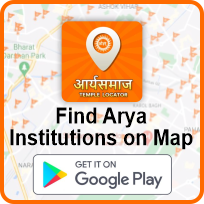

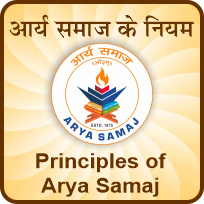
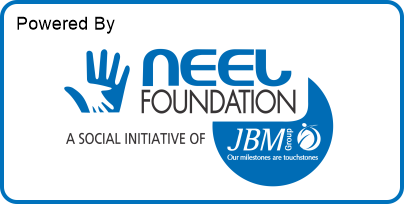

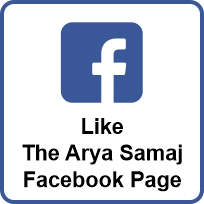
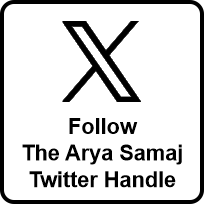



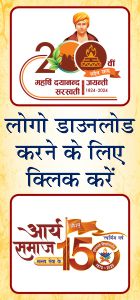
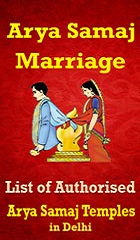
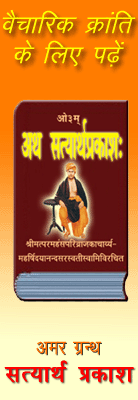


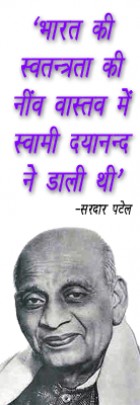
ALL COMMENTS (0)